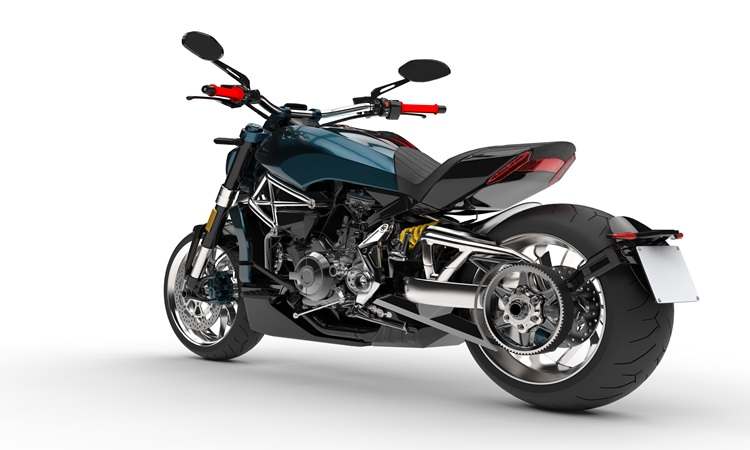Types of Motorcycle Headlights You Should Know
Types of Motorcycle Headlights You Should Know

Motorcycle headlights are essential for visibility and safety, especially in low-light conditions. They ensure that riders see the road clearly and remain visible to others. Just like choosing the right headlight is crucial for ensuring the safety of your ride, securing two-wheeler insurance to protect against unforeseen situations is equally important.
Different Types of Motorcycle Headlights
The motorcycle headlight variants include the following:
1. Halogen Headlights
These are among the most common headlights and have been used for decades. They contain a tungsten filament inside a halogen gas-filled bulb. When electricity passes through, the filament heats up and emits light.
Pros:
• Affordable and easy to replace
• Readily available in the market
Cons:
• Shorter lifespan compared to other headlight types
• Generates more heat, reducing efficiency
Halogen headlights are still used in many motorcycles, especially budget and retro-styled models.
2. LED Headlights
These headlights have gained popularity due to their superior brightness, energy efficiency, and longevity. These lights use light-emitting diodes instead of filaments, making them more durable.
Pros:
• Highly energy-efficient and long-lasting
• Produces a bright, clear beam for better visibility
Cons:
• More expensive than halogen headlights
• Can be too bright for oncoming traffic if not properly adjusted
Many modern motorcycles now have LED headlights, offering enhanced road visibility.
3. Xenon or HID (High-Intensity Discharge) Headlights
Xenon or HID headlights use xenon gas instead of a filament. They produce a bright and cool-toned light. These headlights generate less heat and have a longer lifespan than halogens.
Pros:
• Brighter than halogen bulbs
• Consumes less power and lasts longer
Cons:
• More expensive to install and replace
• Requires professional installation for optimal performance
HID headlights are often preferred by riders who need better visibility on highways and dark roads.
4. Projector Headlights
These use a lens to focus the light beam, providing a sharper and more controlled output. These lights are often paired with LED or HID bulbs for enhanced performance.
Pros:
• Produces a concentrated and well-directed beam
• Reduces glare for oncoming traffic
Cons:
• More expensive than traditional reflector headlights
• Complex design makes replacement costlier
Projector headlights improve nighttime visibility by focusing light exactly where it is needed.
5. Reflector Headlamps
These headlamps are one of the simplest and most cost-effective lighting solutions. They use a reflective housing to distribute light from a tungsten filament bulb.
Pros:
• Affordable and easy to manufacture
• Simple design that requires minimal maintenance
Cons:
• Less focused light beam
• Lower brightness compared to projector headlights
While not as advanced as projector headlights, reflectors remain a popular choice for budget motorcycles.
Conclusion
Motorcycle headlights come in various types, each with its benefits and limitations. Selecting the right one enhances safety and visibility. At the same time, having third-party two-wheeler insurance provides financial protection against unforeseen events.
Disclaimer: The above information is for illustrative purposes only. For more details, please refer to the policy wordings and prospectus before concluding the sales.
RELATED ARTICLES
What Is Automatic Headlight On?
What Causes Foggy Headlights and How to Clear Them?
How To Remove Moisture from Bike Headlights?
Safety Tips for Riding Bike in Foggy Conditions
Bike Modifications - All That You Need to Know










 Health Insurance
Health Insurance  Travel Insurance
Travel Insurance  Car Insurance
Car Insurance  Cyber Insurance
Cyber Insurance  Critical Illness Insurance
Critical Illness Insurance
 Pet Insurance
Pet Insurance
 Bike/Two Wheeler Insurance
Bike/Two Wheeler Insurance  Home Insurance
Home Insurance  Third Party Vehicle Ins.
Third Party Vehicle Ins.  Tractor Insurance
Tractor Insurance  Goods Carrying Vehicle Ins.
Goods Carrying Vehicle Ins.  Passenger Carrying Vehicle Ins.
Passenger Carrying Vehicle Ins.  Compulsory Personal Accident Insurance
Compulsory Personal Accident Insurance  Travel Insurance
Travel Insurance  Rural
Rural 











